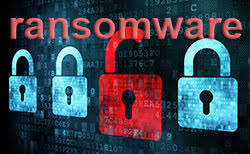Locky Ransomware Claims First High-Profile Casualty During Prolific Escalation
 Ransomware has already claimed its position as being one of the most dangerous and havoc-reeking malware threats we know. While Locky Ransomware is spreading a massive scale across the globe, the encryption-type malware threat has claimed its first high-profile casualty being one of the Whanganui District Health Board's hospitals.
Ransomware has already claimed its position as being one of the most dangerous and havoc-reeking malware threats we know. While Locky Ransomware is spreading a massive scale across the globe, the encryption-type malware threat has claimed its first high-profile casualty being one of the Whanganui District Health Board's hospitals.
Already, ransomware had been useful in many attacks and a similar incident when the Hollywood Presbyterian Medical Center in LA had to pay off a ransomware threat amounting to $17,000 to decrypt their system's files to restore access for their patients. Fresh off of the heels of that incident, the Locky Ransomware (.locky file extension ransomware), a threat that was first identified in February 2016, has captured the attention of a vast community of computer security researchers and brought the Whanganui District Health Board to its knees.
A spokesperson for the Whanganui District Health Board has acknowledged of their systems at one of their hospitals has succumbed to the Locky Ransomware threat. The incident took place February 23, 2016, and has since taken hold of systems at one of its facilities while they wait to find a solution.
Much like the beginning stages of a hostage negotiation effort, the Whanganui District Health Board has not paid the ransom to unlock their ransomware-infected systems. The information and communications technology manager of Whanganui District Health Board, Barry Morris, said that the threat for Locky was contained and no ransom was paid to the hackers. Taking his statement for what it is worth, it looks that the Whanganui District Health Board is on a path to isolate the threat to individual systems and continue their operations as normal. As far as a resolution of Locky Ransomware, we have not received confirmation of a path to a final outcome of the infected computers.
Lock Ransomware has spread to hundreds of thousands of computers around the world. As a relatively new Ransomware threat, Locky is primarily spread through Word documents attached to spam emails. It is believed that Locky is sent out from the hands of what is thought to be Russia's largest cybercrime gang, who have conducted an aggressive spam campaign to spread the malware threat to computers all around the world.
With Whanganui District Health Board being one of the first high-profile targets and victims of ransomware threats, we expect to see many more hitting their mark on other well-known companies or potential government entities in the near future. It's as if the hackers are stopping at nothing to see how much money they can make away with at the expense of victimized computer users who are forced to pay dearly to restore operation to their computer.
Leave a Reply
Please note that we are not able to assist with billing and support issues regarding SpyHunter or other products. If you're having issues with SpyHunter, please get in touch with SpyHunter customer support through your SpyHunter . If you have SpyHunter billing questions, we recommend you check the Billing FAQ. For general suggestions or feedback, contact us.